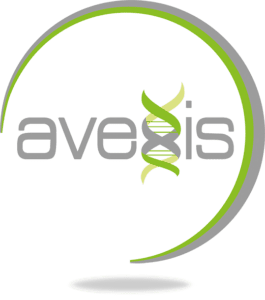
Dear SMA community,
Today, we announced an AVXS-101 intrathecal study update. In the update, we shared that the United States Food & Drug Administration (FDA) placed a partial hold on clinical trials for intrathecal (IT) administration of AVXS-101. This partial hold by the FDA only impacts the IT formulation and does not impact the currently FDA-approved and available Zolgensma® (onasemnogene abeparvovec-xioi) or AVXS-101 intravenous (IV) clinical trials.
The announcement is in response to a recent finding in an AveXis-initiated pre-clinical study in twelve animals which showed dorsal root ganglia (DRG) mononuclear cell inflammation, sometimes accompanied by neuronal cell body degeneration or loss. DRG inflammation can be associated with sensory effects such as tingling, prickling, chilling, burning, or numb sensation. The DRG inflammation seen in this pre-clinical animal study was not seen in prior animal studies with AVXS-101.
To date,140 patients have been treated through IT and IV administration in clinical trials and managed access and more than 100 patients treated with the IV formulation since FDA approval. We have completed a thorough review of human safety data from all available sources, including patients treated in clinical trials and with those treated commercially. To date, no adverse effects related to sensory changes have been seen in AVXS-101 IT or IV Zolgensma.
AveXis is currently studying AVXS-101 IT administration in patients with spinal muscular atrophy (SMA) Type 2. The partial clinical hold impacts enrollment in the high-dose cohort of the STRONG trial – an ongoing, open-label, dose-comparison, multi-center trial designed to evaluate the efficacy, safety and tolerability of one-time IT administration of AVXS-101 in patients age 6 months to 5 years. As a result of the partial hold, we have paused dosing of any new patients in the STRONG study and will not begin the planned REACH study until the partial hold is lifted.
We have notified regulatory authorities and clinical trial investigators to make them aware of this important safety finding and are taking actions to ensure investigators and patients are educated about these findings. In addition, we are adding age appropriate sensory testing, and call for attention to new symptoms of pain, numbness, or paresthesia (tingling, prickling, chilling, burning, or numb sensation on the skin) as part of the neurologic exam at baseline and at each visit in all ongoing clinical trial protocols for AVXS-101.
We recognize this news may be disappointing and cause concern among the community. We want to reinforce that we remain confident the overall benefit-risk profile for patients on treatment is favorable. We will work diligently with FDA to identify any additional actions necessary to resume dosing in the AVXS-101 IT clinical trials.
Again, we want to reiterate that this partial hold by the FDA does not impact the currently FDA-approved and available Zolgensma® (onasemnogene abeparvovec-xioi) or AVXS-101 IV clinical trials.
AveXis and Novartis fully understand the pressing need for treatment advances among older patients with SMA. We remain committed to researching and developing gene therapies for this rare and devastating disease. If you have any questions, please contact AveXis Medical Information at [email protected].
Sincerely,
The AveXis team
Indication
Zolgensma (onasemnogene abeparvovec-xioi) is an adeno-associated virus vector-based gene therapy indicated for the treatment of pediatric patient less than 2 years of age with spinal muscular atrophy (SMA) with bi-allelic mutations in the survival motor neuron 1 (SMN1) gene.
Limitation of Use:
The safety and effectiveness of repeat administration of Zolgensma have not been evaluated.
The use of Zolgensma in patients with advanced SMA (e.g., complete paralysis of limbs, permanent ventilator-dependence) has not been evaluated.
Important Safety Information
Acute Serious Liver Injury Acute serious liver injury and elevated aminotransferases can occur with Zolgensma. Patients with pre-existing liver impairment may be at higher risk. Prior to infusion, assess liver function of all patients by clinical examination and laboratory testing (e.g., hepatic aminotransferases [aspartate aminotransferase and alanine aminotransferase], total bilirubin and prothrombin time). Administer systemic corticosteroid to all patients before and after Zolgensma infusion. Continue to monitor liver function for at least 3 months after infusion.
Thrombocytopenia
Transient decreases in platelet counts, some of which met the criteria for thrombocytopenia, were observed at different time points after Zolgensma infusion. Monitor platelet counts before Zolgensma infusion and on a regular basis afterwards.
Elevated Troponin-I
Transient increases in cardiac troponin-I levels (up to 0.176 mcg/L) were observed following Zolgensma infusion in clinical trials. The clinical importance of these findings is not known.
However, cardiac toxicity was observed in animal studies. Monitor troponin-I before Zolgensma infusion and on a regular basis for at least 3 months afterwards.
Adverse Reactions
The most commonly observed adverse reactions (incidence ≥5%) were elevated aminotransferases and vomiting.
Please read full Prescribing Information for Zolgensma, including Boxed Warning for Acute Serious Liver Injury.



